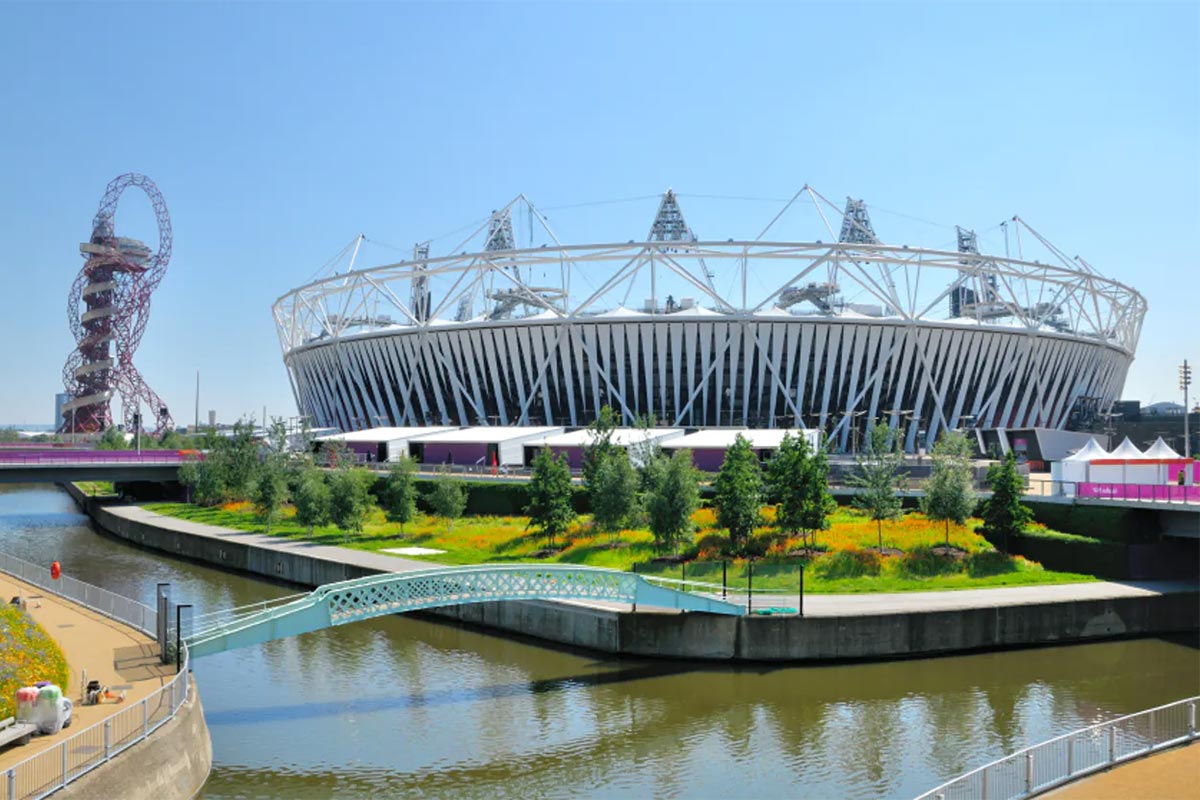The 2012 London Olympic Games was a spectacular sporting event which will be remembered for many years to come. From a spectacular opening ceremony with appearances from everyone from James Bond to The Spice Girls, to the athletes who made their mark on history, it seems unlikely that we will witness another UK event of this magnitude in our lifetime.
In order to host the 800,000 guests and 14,000 athletes, the government commissioned a number of new sports centres and stadiums, such as The London Stadium in Stratford. Now, eight years on from the greatest sporting show in history, we ask, what are the London Olympic venues used for now? Geoenvironmental consultancy firm Patrick Parsons, take a look at the various stadiums used and specifically constructed for the 2012 Olympics, and what they are being used for now.
The Aquatic Centre
Paralympian Ellie Simmonds will be one with fond memories of the facility at Queen Elizabeth park — she landed two gold medals here after heroic performances. Initial construction costs for the aquatic centre were estimated to be around £75 million, however the final bill came in at more than three times this, provoking backlash. During the games, extra stands were built on to the building to allow for an audience of 17,500 viewers, yet after the athletes departed, and the decision was made to turn the vibrant baths into a community pool, the additional seating was removed. For a non-member to swim in the same lanes that the most decorated Olympian in history did, it will cost you only £5.30 — bargain.
The Velodrome
The 6,000-seater cycling venue was dubbed the ‘best of its kind in the world’ when it opened. Chris Hoy and Victoria Pendleton were among the gold medalists at the £94 million centre. After the success of the Olympics, the velodrome was opened to the public. Lee Valley VeloPark as it is otherwise known, offers visitors the opportunity to participate in BMX, track and mountain bike racing. While the track is open to the public throughout most of the year, it does also still host high profile events such as the UCI Track Cycling World Championships.
Lee Valley Hockey & Tennis Centre
During the 2012 Olympics, the Lee Valley Hockey & Tennis Centre was used as the only purpose-built Paralympic stadium. Playing host to the 2012 wheelchair tennis event, the venue, last year, went on to host a bigger crowd than it did during the games. The Women’s Hockey World Cup was hosted in London for the very first time in 2018, and it was the biggest hockey event the United Kingdom has ever witnessed. Despite hosting world championships, just like its counterparts, the Hockey & Tennis Centre hasn’t neglected the community either — opening up to the public and encouraging local but particularly younger children to get involved in sport.
Basketball Arena
Unfortunately, the usable life of everything from the Olympic games doesn’t quite out-live the three-week event. The home to basketball at the 2012 London Olympics isn’t something to get uptight about however. A temporary arena was always the plan, and so the structure was covered in 20,000 squared metre of recyclable PVC fabric. Despite being able to house 12,000 fans during the event, when everything finished, the structure was simply taken down like a tent, the metal packed away, and the plastic recycled — as if the games didn’t give us enough inspiring stories.
London Stadium
Undoubtedly the most contentious of the stadiums or venues involved in the 2012 Olympic games, and it remains so even now. Now playing home to West Ham Football Club, the 80,000-seater, which has since been reduced to 66,000 since The Hammers took it over, hosted the maximum capacity crowd who witnessed Mo Farah claim his second Olympic gold while Jamaican sensation Usain Bolt acquired his career sixth. As the curtains were drawn on perhaps the greatest event that the nation will ever experience, renditions of Waterloo Sunset, What Makes You Beautiful, and West End Girls , bellowed out in a very-fitting closing ceremony that celebrated Britain’s majestic history. West Ham won the bid for the ground and so they brought Premier League football across town in August 2016. Alongside hosting football, the Rugby World Cup 2015 came to the Queen Elizabeth Olympic Park, as did league team Saracens, and this year it will host the Muller Anniversary Games.
Tragically, throughout history we have seen numerous occasions in which major sporting events have came to town, millions of pounds have been ploughed into constructing super-seater stadiums, and then once everything is over, the regeneration program turns to wreck and ruin. Certainly, there exist circumstances in which London hasn’t maintained its manufacturing works, but the project as a whole is definitely something, we can all be proud of.


